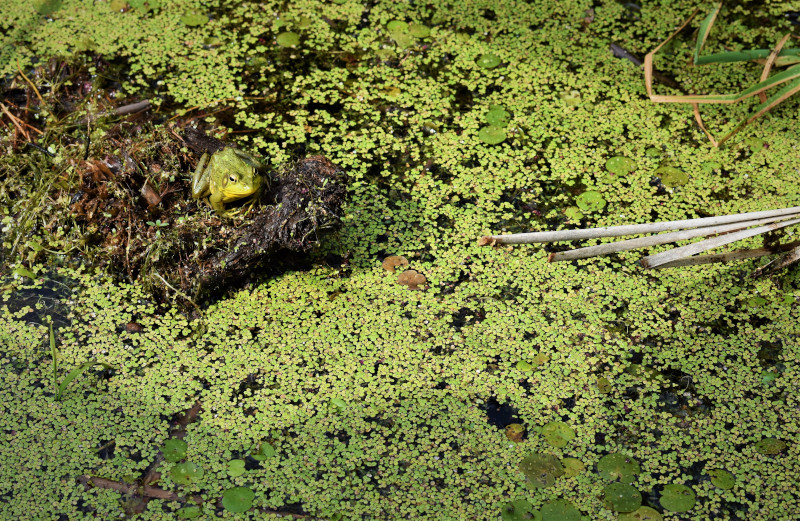Many gardeners look at their ponds in dismay at this time of year as the green bloom of duckweed starts to spread across the water’s surface. But there is more to this relative of the arum lily than at first meets the eye.
Contrary to popular belief, duckweed is generally the sign of a healthy pond and it is quite different from the slimy filaments of green algae which remove oxygen and suppress the growth of other plants and creatures. Duckweed – such as the common or garden ‘lesser duckweed’ (Lemna minor) – helps keep the algae in check. Surprisingly, duckweeds are now being considered for a wide variety of useful human applications.
Duckweed is a flowering plant but it has all the usual plant parts scrunched down into a very small space. In fact, a relative of our common duckweed – called watermeal duckweed (Wolffia globosa) found in Asia and the Americas is the smallest known flowering plant at just 0.1 – 0.2 mm in size. That’s the whole plant, not just the flowers!
Duckweed consists of one or more green leaves (called fronds) with between zero and many roots (depending on the species) dangling down into the water. The plant grows by budding additional fronds which eventually separate off into new floating plants. Most species of duckweed grow quite happily and quickly this way but they flower rarely and flowers are so small you would struggle to notice them.
One British duckweed species – the greater duckweed or duckmeat – overwinters by producing small black fronds called turions as cold weather approaches and these sink to the bottom of the pond to evade surface ice. The following spring as the water warms, the turion comes to life and produces a tiny bubble of oxygen which carries the black frond back to the surface of the water where it germinates into a new plant.
Duckweeds also have many useful properties and are being exploited for human use. These include removal of toxic elements from water such as arsenic and mercury, wastewater treatment, as biofuel, and as animal feed due to their high protein content.
But some gardeners just don’t like the look of this diminutive green wonder and it can choke a pond if left unchallenged. Duckweed grows fastest in ponds with high levels of nutrients so don’t overfeed your fish (most also eat duckweed).
Duckweed can be controlled with chemicals but who wants to do that? All you have to do for a small pond is to skim it off the surface every so often and give it to your ducks to eat.

